Last updated 4/2020
MP4 | Video: h264, 1280×720 | Audio: AAC, 44.1 KHz
Language: English | Size: 16.13 GB | Duration: 36h 22m
From Beginner To Advance, Scratch To Professional, ZERO To Mastery, And A Complete Package To All
What you’ll learn
Complete C programming.
From ZERO knowledge to PROFESSIONAL knowledge in C programming.
From BEGINNER to ADVANCE concepts in C.
You will be mastering C programming.
1 course project and 10 brainstorming programs.
201+ Example programs for you to understand and master each concepts.
10 Assignments to leverage the concepts
10 Quizzes for self-assessment
You will be developing a SOFTWARE PRODUCT – BOOK STORE MANAGEMENT
A firm foundation to your programming skills.
Writing quality and standard code.
Develop applications with C programming.
Leveraging your logical skills.
3 BONUS LECTURES…!!!
Many more…
Requirements
NO REQUIREMENTS!
Only you need is – this course and your Laptop/PC.
Description
Hi There!Want to become a SOFTWARE DEVELOPER? Don’t worry, I have made it easy for you. Learning C programming is now made easy for EVERYONE, whether you are a beginner or intermediate. This course contains ALL CONCEPTS of C, right from scratch to advance level and from ZERO to HERO.You will be a software developer at the end of this course, believe me! Because we will be developing a product(.exe file) called BOOK STORE MANAGEMENT in our course project, it’s amazing. BONUS 1 – you will learn the SOFTWARE DEVELOPMENT PHASES that every IT company follows, right from “requirement collection” to “releasing the product”. BONUS 2 – you will be learning “preprocessor”. BONUS 3 – diving into the standard C libraries and getting familiar with it. BONUS 4 – diving into “Debugging”, where we’ll learn how to debug(manual + automatic). Just check the titles of every assignment, you will get to know the level of programs that we’ll be leveraging.In this course, you will be guided with 10 assignments of real-time problems and a quiz for each section to self-assess yourself. with over 200+ example programs you will be mastering each and every concept in C. Every concept is neatly explained with step by step process. NO matter who you are, you will be an excellent programmer at the end of this course, believe me! you will be diving deep into every concept with the best examples. This course will not be stagnant, it will always get updated!At the end of this course, you will be having a great foundation for your career path and strong knowledge with awesome skills to unlock other programming languages. You will be having a good skill set to achieve your every dream of a career as a developer. Lastly, you will be standing out as THE BEST PROGRAMMER and may get into your dream company.SO, what you are waiting for? Buy this course and achieve your dreams. See you on the course. Thank you.
Overview
Section 1: Introduction
Lecture 1 Introduction And Welcome
Lecture 2 Advantages Of C
Lecture 3 Disadvantages of C
Lecture 4 Course Overview
Lecture 5 How To Get Most Out Of The Course
Section 2: Fundamentals Of C
Lecture 6 Section Overview
Lecture 7 History Of C
Lecture 8 What is High, Middle, & low level languages
Lecture 9 What is C Language?
Lecture 10 Compiler & Interpreter
Lecture 11 Library & Linker
Lecture 12 Execution Of C Program
Lecture 13 Structure Of C Program
Section 3: Installation Of CodeBlocks & Your First C Program
Lecture 14 Section Overview
Lecture 15 What’s An IDE
Lecture 16 Installation of CodeBlocks In Windows
Lecture 17 Installation of CodeBlocks In Mac
Lecture 18 Your First C Program(Hello, World!)
Lecture 19 Comments In C
Lecture 20 Analyzing “Hello, Word!” Program
Section 4: DataTypes, Variables & Constants
Lecture 21 Section Overview
Lecture 22 What Are DataTypes
Lecture 23 Character Set & C Tokens
Lecture 24 Keywords & Identifiers
Lecture 25 Keywords & Identifiers In CodeBlocks
Lecture 26 What Are Variables
Lecture 27 Declaration Of Variable
Lecture 28 Initialization Of Variable
Lecture 29 Declaration & Initialization Both…
Lecture 30 What Is Typedef.
Lecture 31 Enum
Lecture 32 Storage Classes
Lecture 33 Constants
Lecture 34 Making Variable As Constant
Lecture 35 Making Variable As Volatile
Lecture 36 Symbolic Constants
Section 5: Input & Output Operations
Lecture 37 Section Overview
Lecture 38 Reading A Character From A Keyboard
Lecture 39 Writing A Character To The Screen
Lecture 40 Reading An Input – Advance Concept
Lecture 41 Reading Integer Numbers
Lecture 42 Reading Multiple Integer Numbers
Lecture 43 Reading Multiple Floating Point Number
Lecture 44 Reading Single Character Using “scanf()”
Lecture 45 Reading A String
Lecture 46 Reading Mixed Datatypes
Lecture 47 Printing An Integer To The Screen
Lecture 48 Printing A Floating Point Number
Lecture 49 Printing A Single Character To The Screen
Lecture 50 Printing The String…
Lecture 51 Printing A Mixed Datatypes
Section 6: Operators & Expressions
Lecture 52 Section Overview
Lecture 53 Arithmetic Operators(Integer)
Lecture 54 Arithmetic Operators (Floating Point)
Lecture 55 Arithmetic Operators (Mixed-Type)
Lecture 56 Relational Operators
Lecture 57 Logical Operators
Lecture 58 Increment & decrement Operator
Lecture 59 Assignment Operator
Lecture 60 Bitwise Operator
Lecture 61 Bitwise Operator – Bitwise AND
Lecture 62 Bitwise Operator – Bitwise OR
Lecture 63 Bitwise Operator – Bitwise EX-OR
Lecture 64 Bitwise Operator – Shift Left
Lecture 65 Bitwise Operator – Shift right
Lecture 66 Conditional Operator
Lecture 67 Special Operators
Lecture 68 What Are Expressions
Lecture 69 Evaluation Of Expression
Lecture 70 Precedence & Associativity Of Operators
Lecture 71 Working With Precedence & Associativity
Lecture 72 Implicit Type Conversions In Expressions
Lecture 73 Explicit Type Conversions In Expressions
Section 7: Branching (Decision Making)
Lecture 74 Section Overview
Lecture 75 What Is Branching
Lecture 76 The IF Statement
Lecture 77 The IF Statement Continued
Lecture 78 The IF ELSE Statement
Lecture 79 Nesting of IF ELSE
Lecture 80 Nested IF statement?
Lecture 81 ELSE IF Ladder
Lecture 82 Switch Statement
Lecture 83 Switch Statement Continued
Lecture 84 Rules Of Switch
Lecture 85 Conditional Operator (Revisited)
Lecture 86 Goto Statement
Section 8: Loops
Lecture 87 Section Overview
Lecture 88 What Is Looping?
Lecture 89 FOR Loop
Lecture 90 FOR Loop Continued
Lecture 91 FOR Loop Continued (Printing 0 To N)
Lecture 92 FOR Loop Continued(skipping loops & More)
Lecture 93 FOR Loop Continued(4 Printing 0 To 10 Reverse)
Lecture 94 Making For Loop Funny
Lecture 95 While Loop
Lecture 96 Comparing FOR And WHILE Loops
Lecture 97 Do While Loop
Lecture 98 Jumping Out Of The Loop
Section 9: Arrays
Lecture 99 Section Overview
Lecture 100 What Are Arrays
Lecture 101 ONE Dimensional Array And its Declaration
Lecture 102 Initialization Of Array At Compile Time
Lecture 103 Initialization Of Array At Manual-Run-time
Lecture 104 Initialization Of Array At Dynamic-Run-Time
Lecture 105 Printing The Array
Lecture 106 The 2D Arrays
Lecture 107 Declaration Of 2D Array
Lecture 108 Compile-Time Initialization Of 2D Array
Lecture 109 Manual-Run-Time Initialization Of 2D Array
Lecture 110 Dynamic-Run-Time Initialization Of 2D Array
Lecture 111 Printing The 2D Array
Lecture 112 Multi-dimensional Array
Lecture 113 Dynamic Arrays
Section 10: Strings
Lecture 114 Section Overview
Lecture 115 Reading And Writing A char (REVISIT)
Lecture 116 Declaration Of String (REVISIT)
Lecture 117 Initialization Of String And Its I/O
Lecture 118 String Arithmetic
Section 11: Functions
Lecture 119 Section Overview
Lecture 120 Modular Programming In C
Lecture 121 what Is A Function In C
Lecture 122 Declaration Of A Function
Lecture 123 Definition Of A Function
Lecture 124 Calling A Function – Your First Modular C Program
Lecture 125 NO Arguments, NO Return_Type Functions
Lecture 126 With Arguments & NO Return Value Functions
Lecture 127 With Arguments And No Return Value Functions Continued
Lecture 128 With Argument & ONE Return Value Functions
Lecture 129 NO Arguments & ONE Return Value Functions
Lecture 130 MULTIPLE Arguments & NO Return Value Functions
Lecture 131 MULTIPLE Arguments & ONE Return Value Functions
Lecture 132 MIXED MULTIPLE Arguments & ONE Return Value Functions
Lecture 133 Function Returning MULTIPLE Values
Lecture 134 Multi-Function Programming
Lecture 135 Nesting Of Functions
Lecture 136 Recursion
Lecture 137 Advanced Recursion
Lecture 138 Factorial Of A Number – Recursion
Lecture 139 Passing An Array To The Function
Lecture 140 Passing The STRING To The Function
Lecture 141 ADVANCED Functions
Lecture 142 storage Class(Revisited) – Local Variables
Lecture 143 External(Global) Variables
Lecture 144 External(Global) Variables Continued
Lecture 145 Making Use Of extern
Lecture 146 Static Variables
Lecture 147 Register Variables
Lecture 148 Getting Data From External File
Lecture 149 Nested Blocks
Section 12: Pointers – The Killer Concept
Lecture 150 Section Overview
Lecture 151 Pointers & Its Advantages
Lecture 152 Declaring A Pointer Variable
Lecture 153 Initialization Of A Pointer
Lecture 154 Getting The Address Of A Variable
Lecture 155 Getting The Address Of A Pointer
Lecture 156 Getting The Value Of Variable Using A Pointer
Lecture 157 Multiple Pointing
Lecture 158 MULTIPLE DATA HANDLING Using Pointers
Lecture 159 Pointer To A Pointer
Lecture 160 Pointer To A Pointer Continued
Lecture 161 Pointer Expression
Lecture 162 Type Casting In Pointer Expressions
Lecture 163 Rules Of Pointer Operations
Lecture 164 Incrementing & Decrementing The VALUE With Pointers
Lecture 165 Incrementing & Decrementing The ADDRESS With Pointers
Lecture 166 Pointers & Arrays
Lecture 167 Pointers & Arrays Continued
Lecture 168 Pointer To An Array
Lecture 169 Pointer To 2D Array
Lecture 170 Pointer To The String
Lecture 171 Array Of Pointers
Lecture 172 Pointers As Function Arguments
Lecture 173 Functions Returning Pointers
Lecture 174 Special Operator(Revisited)
Section 13: Command Line Arguments
Lecture 175 Section Overview
Lecture 176 What Is Command Line Arguments
Lecture 177 Syntax & Working Of CLA
Lecture 178 CLA With Real-Time Example
Section 14: Structures & unions
Lecture 179 Section Overview
Lecture 180 What Is A Structure
Lecture 181 Arrays VS Structures
Lecture 182 Defining A Structure
Lecture 183 Declaring A Structure Variable
Lecture 184 Declaring A Structure Variable Continued
Lecture 185 Type-Defined Structure
Lecture 186 Initializing A Structure Variable
Lecture 187 Rules For Initialization Of Structure Variable
Lecture 188 Accessing Structure Variables
Lecture 189 Copying & Comparing Structure Variables
Lecture 190 Operations On Structure Members
Lecture 191 Operations On Structure Members Continued
Lecture 192 Ways To Access Structure Members
Lecture 193 Arrays Of Structures
Lecture 194 Declaration Of Array Of Structures
Lecture 195 Initialization Of Array Of Structures
Lecture 196 Accessing Elements In Array Of Structures
Lecture 197 Advanced Array Of Structures
Lecture 198 Array WITHIN Structures
Lecture 199 Array WITHIN Structures Continued
Lecture 200 Nested Structures
Lecture 201 What Is A Union
Lecture 202 Defining A Union
Lecture 203 Initializing A Union
Lecture 204 Size Of Structure & Union
Lecture 205 Bit Fields
Section 15: File Management
Lecture 206 Section Overview
Lecture 207 What Is A File
Lecture 208 Defining A File
Lecture 209 Opening A File
Lecture 210 Opening A File Continued
Lecture 211 Closing A File
Lecture 212 Handling Multiple Files
Lecture 213 Writing A Character Into The File
Lecture 214 Writing A Character Continued
Lecture 215 Reading A Character From The File
Lecture 216 The Challenge
Lecture 217 Challenge Solution
Lecture 218 Read & Write An Integer Into/From File
Lecture 219 Writing A Mixed Data Into A File
Lecture 220 Reading A Mixed Data From The File
Lecture 221 Writing A Text Into The File
Lecture 222 Reading A Text From The File
Lecture 223 Reading A Whole File
Lecture 224 Error Handling In Files
Lecture 225 Random Access To The File
Lecture 226 Random Access To The File Continued
Lecture 227 fseek() Function
Lecture 228 fseek() Function Continued 1
Lecture 229 fseek() Function Continued 2
Section 16: Dynamic Memory Allocation
Lecture 230 Section Overview
Lecture 231 What Is Dynamic Memory Allocation
Lecture 232 Dynamic Allocation Functions
Lecture 233 Dynamic Memory Allocation Process
Lecture 234 malloc() Function
Lecture 235 malloc() Function – Fully Dynamic
Lecture 236 malloc() Function Continued – Storing Data
Lecture 237 calloc() Function
Lecture 238 Dynamic Arrays Using calloc()
Lecture 239 Making malloc() As calloc()
Lecture 240 Error Handling In calloc() & malloc()
Lecture 241 Dynamic Memory De-allocation
Lecture 242 Reallocation Of Dynamic Memory
Lecture 243 Reallocation Of Dynamic Memory Continued
Section 17: BONUS 1 – Preprocessor
Lecture 244 Section Overview
Lecture 245 What Is A Preprocessor
Lecture 246 What Are Preprocessor Directives
Lecture 247 Macro Substitution
Lecture 248 Macro Substitution Continued 1
Lecture 249 Macro Substitution Continued 2
Lecture 250 Macro Substitution With Arguments
Lecture 251 Nested Macro Substitution
Lecture 252 File Inclusion Directive
Lecture 253 File Inclusion Directive Continued
Lecture 254 Building A Custom LIBRARY
Lecture 255 Compiler Control Directives #ifdef
Lecture 256 Compiler Control Directives #else
Lecture 257 Compiler Control Directives #ifndef
Lecture 258 Compiler Control Directives #undef
Lecture 259 Compiler Control Directives #pragma
Section 18: BONUS 2 – Standard C Library
Lecture 260 Standard C Libraries
Lecture 261
Lecture 262 Continued
Lecture 263
Lecture 264 Continued
Lecture 265
Lecture 266
Section 19: COURSE PROJECT(Software Development)
Lecture 267 Our Project Preview
Lecture 268 Software Development Phases
Lecture 269 Project Requirements
Lecture 270 Analyzing The Requirements
Lecture 271 Building Algorithm
Lecture 272 Coding – Designing Structure
Lecture 273 Coding – Adding Choices
Lecture 274 Coding – Make The Code Work
Lecture 275 Coding – Modular Approach
Lecture 276 Coding – Making The Array Global
Lecture 277 Coding – Adding READ Feature
Lecture 278 Coding – Adding WRITE Feature
Lecture 279 Coding – Adding BACKUP Feature
Lecture 280 Testing The Product
Lecture 281 Releasing Our Product
Section 20: BONUS 3 – Debugging in C
Lecture 282 Manual Debugging
Lecture 283 Understanding the Debugger & setting it up in CodeBlocks
Lecture 284 Breakpoints & Step Into
Lecture 285 Watches
Lecture 286 CPU Registers
Lecture 287 Understanding The Assembly Language
Lecture 288 Disassembly
Lecture 289 Understanding The Call Stack
Lecture 290 Call Stack In Codeblocks
Lecture 291 Common C Mistakes
Lecture 292 Common C Mistakes Continued
Section 21: Conclusion
Lecture 293 Course Summary
Lecture 294 Further Studies
Lecture 295 Thank you
Anyone who need to start their career as a programmer.
HOMEPAGE
https://anonymz.com/?https://www.udemy.com/course/complete-and-ultimate-c-programming-course/
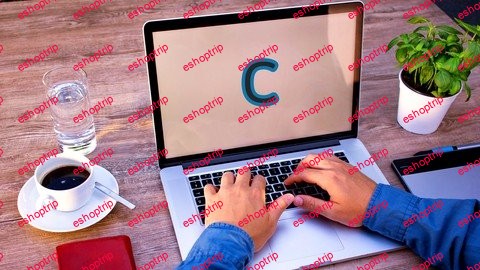

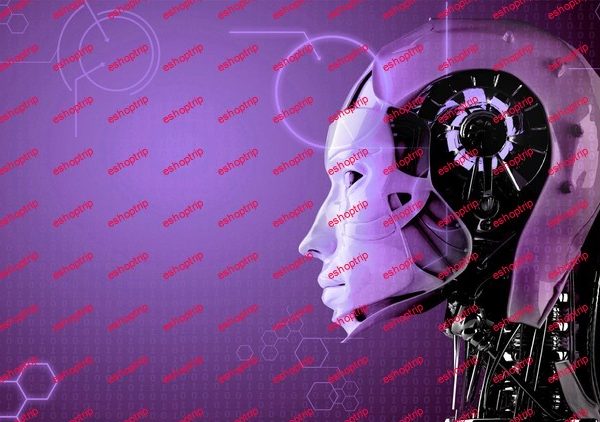

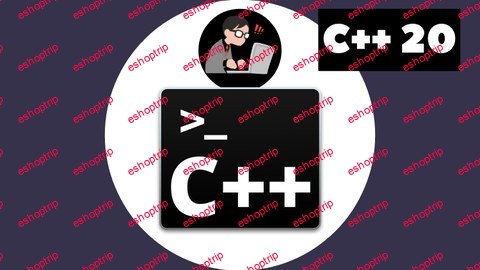

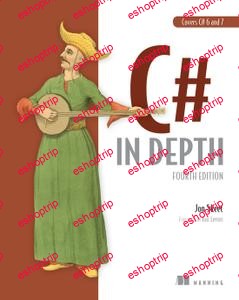
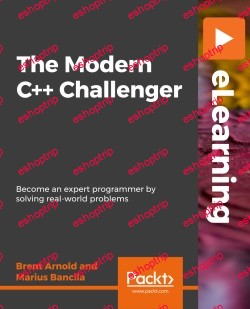
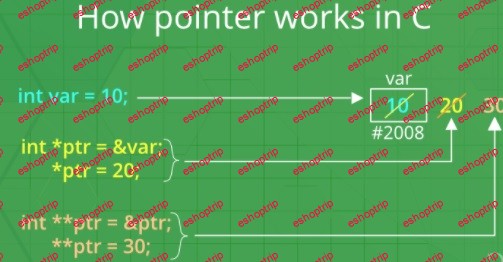


Reviews
There are no reviews yet.